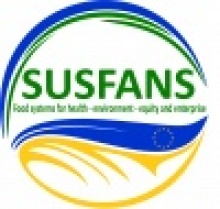Livestock production in the European Union: Less consumption of animal source food: Reducing emissions and contributing to health
Over the last decades, demand for animal-source food has increased in Europe. This food consumption pattern leads to health issues. Given current high consumption levels of animal-source food in Europe, two main strategies are suggested to come to healthy and sustainable diets:
- reducing the impact of livestock production per kg of output. This can be achieved by sustainable intensification of food production.
- improving human health and the environment by changing dietary patterns.
Too much animal-source protein intake
In Europe, the demand for animal-source food increased from 42 g of protein per person per day in 1961 to 61 g of protein per person per day in 2010. The current intake of protein exceeds the daily recommended intake of protein of approximately 57 g per person per day by far. Moreover, the recommendations say that only one third of daily human protein need should come from animal sources. Exceeding this recommended amount leads to health issues.
The main reason for increased protein intake is increased meat consumption. Although there are large differences in income between and within European countries, overall, people are and will continue to become richer. And getting richer has shown to go along with increased consumption of animal-source food.
In response, the number of livestock as well as animal productivity have increased, due to science and technological developments. The livestock sector in Europe is responsible for about 15 percent of the total anthropogenic emissions of greenhouse gases. Moreover, it competes for scarce resources such as land, water, and fossil energy. Food consumed in Europe is responsible for about 31 percent of the total European anthropogenic greenhouse gas emissions.
Science and technology played an important role in this intensification process. However, we can see a current trend of stagnating demand for animal-source food in Europe. In some European countries, this demand is even decreasing due to socio-economic factors like environmental concerns, human health concerns, and changing socio-cultural values like animal welfare.
Reducing emissions and increasing efficiency contribute to health
The dual challenge of the livestock sector is to contribute to healthy diets for a growing and more prosperous population, while at the same time reduce its emissions and increase its resource use efficiency.
Given current high consumption levels of animal-source food in Europe, two main strategies can be followed to come to healthy and sustainable diets: reducing the impact of livestock production per kg of output by sustainable intensification, or improve human health and the environment by changing dietary patterns.


Comments
Add new comment